Are you seeing the leaves of your blueberry shrubs turning purple? Early signs of foliage discoloration in blueberries are often a cause for concern, as this can be indicative of several problems – from fungal infections to nutrient deficiencies. In this blog post, we’ll explore some common causes and possible solutions when it comes to discovering why your blueberry plant’s leaves are turning purple. We’ll also go over some preventative care and steps you can take to ensure that your berry bushes remain healthy all season long. So no matter what kind of climate or soil type you have in your garden, keep reading to find out how taking proactive measures now will help avoid potential issues with purple leaves!
Reasons For Blueberry Leaves Turning Purple
Phosphorus Deficiency
A lack of phosphorus is a common cause of blueberry leaves turning purple. When there is insufficient phosphorus in the soil, it hinders the growth and development of the plant.
Too Much Nitrogen
Blueberries require a balance of both nitrogen and phosphorus to maintain healthy foliage, but if there is too much nitrogen available in the soil, this can cause the leaves to turn purple. The excess nitrogen stimulates chlorophyll production, which gives the leaf its purple color.
Low Temperatures
Blueberry leaves can turn purple due to low temperatures as well. When temperatures are too cold, it can inhibit photosynthesis or slow down its process, resulting in a decrease of sugar and energy levels for the plant. [1]
Over Watering
Blueberry leaves may turn purple when the soil is excessively wet or waterlogged. Overwatering soil can reduce oxygen availability and hinder the uptake of nutrients by plants, leading to discoloration and stress.
Magnesium Deficiency
Purple leaves in blueberries can also be caused by a lack of magnesium. Magnesium helps to regulate the movement of water and nutrients within the plant, so when there is not enough available, the leaves may start to turn purple.
Fungal Diseases
Blueberry leaves can turn purple due to fungal diseases. These diseases, such as anthracnose and botrytis, can weaken the plant and lead to discoloration of the foliage.
How Do You Fix Red Leaves On Blueberries?
If your blueberry plants exhibit red leaves, there are several steps you can take to address the problem.
Firstly, check the overall health of the plant. Ensure that it is adequately watered and well fertilized. Proper soil drainage and air circulation will also help to ensure that blueberry plants remain healthy. If your plant does not have access to adequate water or nutrients, provide those necessary elements as soon as possible.
Next, inspect for any signs of pests or disease. Both insects and fungal diseases can cause leaf discoloration in blueberries, so it is important to investigate these possibilities before taking corrective action. Contact a professional if needed to identify the source of damage and determine appropriate treatments to eradicate them from the plant.
Finally, you may need to prune any affected branches or leaves if necessary. If the damage is not too extensive, the healthy leaves and branches can be salvaged while removing only those that are visibly damaged. This will help promote healthier growth in the future.
It is important to take action as soon as possible when blueberry leaves start turning red in order to protect the overall health of the plant. By following these steps, you’ll be able to ensure that your blueberry plants remain healthy and productive for years to come! [2]
How Do You Add Magnesium To Blueberries?
Magnesium is essential for healthy blueberries, but it can be difficult to provide the right amount of magnesium in the soil. The best way to add magnesium to your blueberry plants is by fertilizing with Epsom salts or magnesium sulfate. You should apply one pound of Epsom salts per 100 square feet of soil, mixed into the soil at a depth of 6 inches. This should be done every two weeks throughout the growing season, ensuring that you are providing adequate amounts of magnesium for your blueberry bushes.
Be sure to follow package directions when applying any type of fertilizer as over-fertilizing can damage your plants. Also, be sure to water the fertilizer in well after application.
By following these steps, you should be able to provide adequate amounts of magnesium for your blueberry bushes and help keep them healthy and happy!
Is Epsom Salt Good For Blueberry Bushes?
Epsom salt is a mineral compound made up of magnesium and sulfur that can be beneficial for blueberry bushes. The magnesium in Epsom salt helps promote strong root growth, while the sulfur helps to increase acidity in the soil, which is beneficial for blueberry plants as they prefer more acidic soils. Additionally, Epsom salt can help to improve overall plant health by providing the nutrients needed for healthy foliage.
Despite its potential benefits, Epsom salt should not be used as a cure-all for blueberry bushes that are having trouble or turning purple. Instead, it is important to understand what is causing the problem and address it through cultural practices such as proper fertilization, irrigation, pruning and pest control.
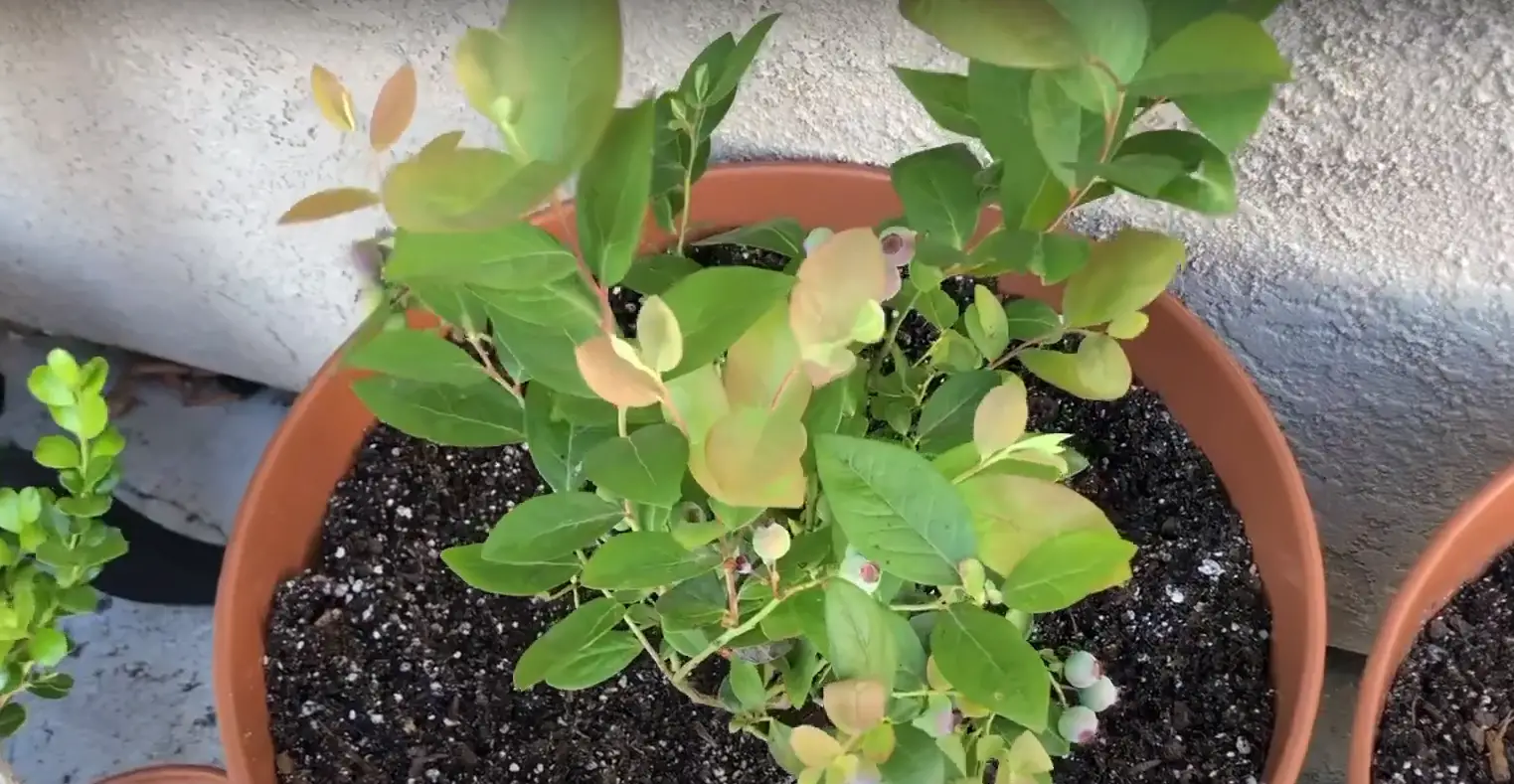
Additionally, you may want to have your soil tested so that you can adjust the pH if necessary.
If all else fails, contact a local Extension Service office for assistance in diagnosing and treating any underlying issues that might be affecting your blueberry bush. With the right care and attention, you can keep your blueberry bush thriving all season long! [3]
How To Prevent a Disease From Causing Purple Leaves?
When it comes to preventing a disease from causing purple leaves on blueberry plants, the most important thing is to practice regular preventative care. This includes monitoring for signs of stress and damage, as well as providing proper nutrition and watering. The following are some additional steps you can take to help keep your blueberries healthy:
- Remove any diseased or damaged stems and leaves that you find on the plant. If there are too many infected branches, consider pruning them back completely.
- Plant your blueberry bushes in an area where they will receive good drainage, such as on a slope or near a ditch line. Avoid areas with standing water or lots of heavy clay soil.
- Provide the right amount of water as needed. Blueberries prefer moist soil, but be careful not to over-water them. Waterlogged roots can lead to fungal diseases and root rot.
- Mulch around your plants with pine needles or shredded leaves. This helps keep the ground moist and cool, which in turn discourages disease development.
- Make sure your blueberry bushes are receiving adequate nutrition throughout the growing season by applying a balanced fertilizer in early spring and again mid-summer.
- Monitor for signs of common pests such as aphids, mites, and thrips, and take steps to control them if necessary.
- Avoid overhead watering whenever possible as this can promote fungal diseases. Instead, water the soil directly and use drip irrigation or soaker hoses to prevent leaf wetness.
By following these simple steps, you can help keep your blueberry bushes healthy and free from disease that could lead to purple leaves. With a little bit of extra care, you’ll be able to enjoy beautiful blueberries all season long! [4]
When To Expect My Blueberry Plants To Bear Fruit?
Fruit production in blueberry plants generally begins three to four years after planting. Flowering begins during the first year, and small fruits may form that season, but they are usually not mature enough to harvest. Generally, fruit production is heaviest during the fourth or fifth year of growth. Once a bush starts bearing fruit, it should produce for several years.
In conclusion, blueberry plants can take a few years to produce fruit, but with proper pruning and fertilization you can maximize the amount of fruit your plant produces each season. With enough patience and care, you will soon be able to reap the rewards of your labor!
Maintenance Tips
If you want to avoid having your blueberry leaves turn purple, there are a few things you can do. First, make sure that your blueberry plants have the correct amount of sunlight for their growth stage. Blueberries require 6-8 hours of direct sunlight in order to grow optimally. Additionally, keep the soil pH level between 4 and 5.5 by using sulfur or other acidifying amendments if needed.
Lastly, water your blueberries consistently and deeply – about 1 inch (2 cm) per week during dry periods. Doing this will ensure that the plants receive adequate moisture without encouraging root rot or disease.
By following these maintenance tips, you can help keep your blueberry leaves from turning purple due to nutrient deficiencies and other causes.
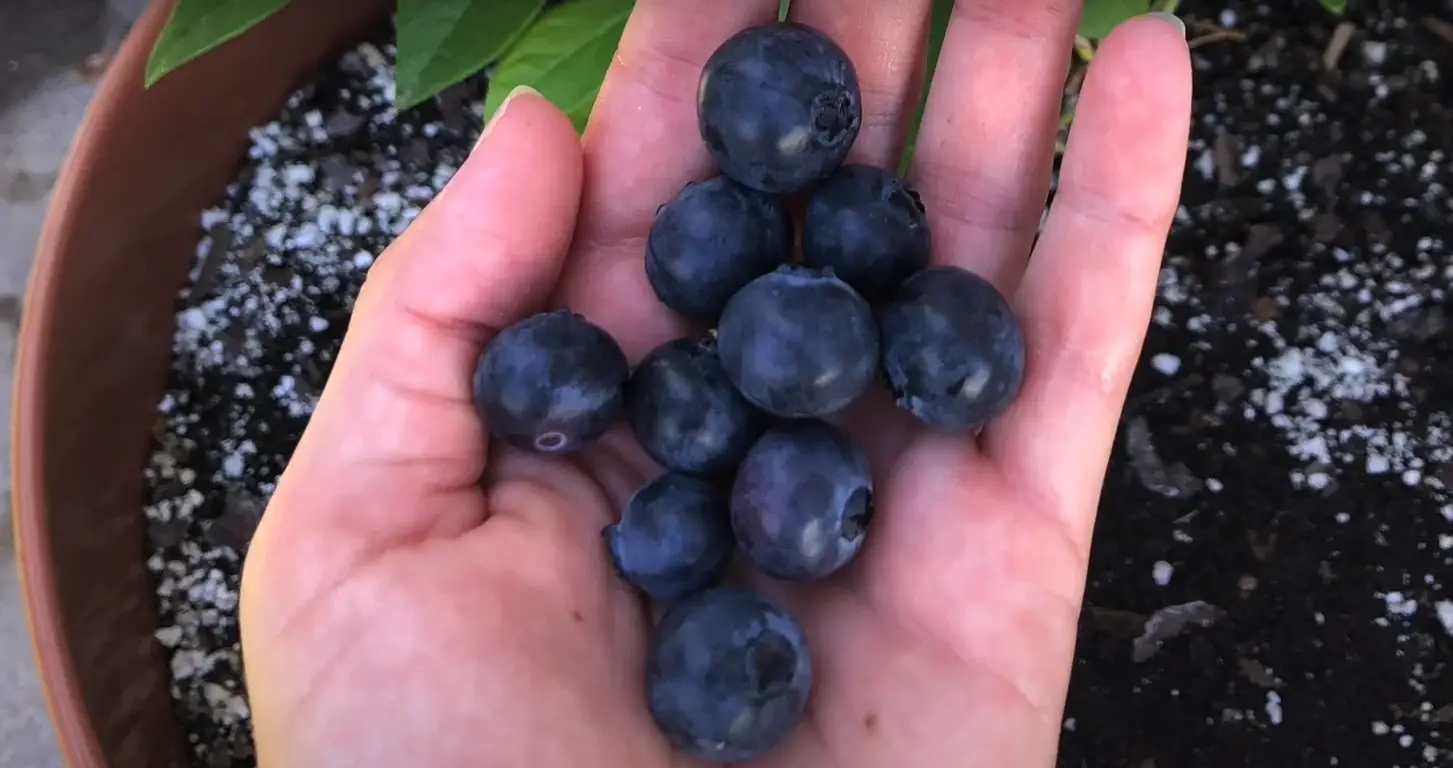
Why Are My Blueberry Leaves Turning Brown?
It’s a common sight for blueberry bushes during the late summer months: leaves turning brown. While this may appear concerning, it is usually nothing to be alarmed about. There are several possible reasons why blueberry leaves can turn from green to brown.
The first reason is natural leaf drop. As the summer draws to an end, many plants begin dropping older leaves in order to produce new ones with more nutrients and vigor. This type of shedding does not require any treatment since it is a normal part of plant life cycles.
Finally, there are certain diseases and pests that can cause discoloration in blueberry foliage. These include mites, fungus, and bacterial blight. If these are present on your plants, it is important to take action as soon as possible to prevent further damage. Treating with an insecticidal soap or fungicide may be necessary to rid your plants of disease-causing organisms. [5]
How To Fix Yellow Blueberry Leaves?
If you have blueberry bushes in your garden and the leaves are turning yellow, it may be a sign that something is amiss. Yellowing of the leaves can be caused by several things such as too much water, not enough nutrients, or disease.
The first step in fixing yellow blueberry leaves is to determine what is causing the problem. If too much water is the cause, then reducing irrigation will help. On the other hand, if inadequate nutrients are at fault then adding fertilizer may be necessary. Additionally, if disease issues are present then fungicides and other treatments may need to be applied to treat them.
If watering is an issue, water blueberry plants early in the day so they get plenty of hydration but give them time to dry out before nightfall. Avoid wetting the leaves when you water as this can create a breeding ground for fungal diseases like leaf spot or blight which can contribute to yellowing leaves.
Finally, if disease is present then use fungicides such as copper sulfate or sulfur dust according to label instructions in order to keep the disease in check. This, in turn, will help protect the blueberry plants from further damage and keep their leaves looking healthy.
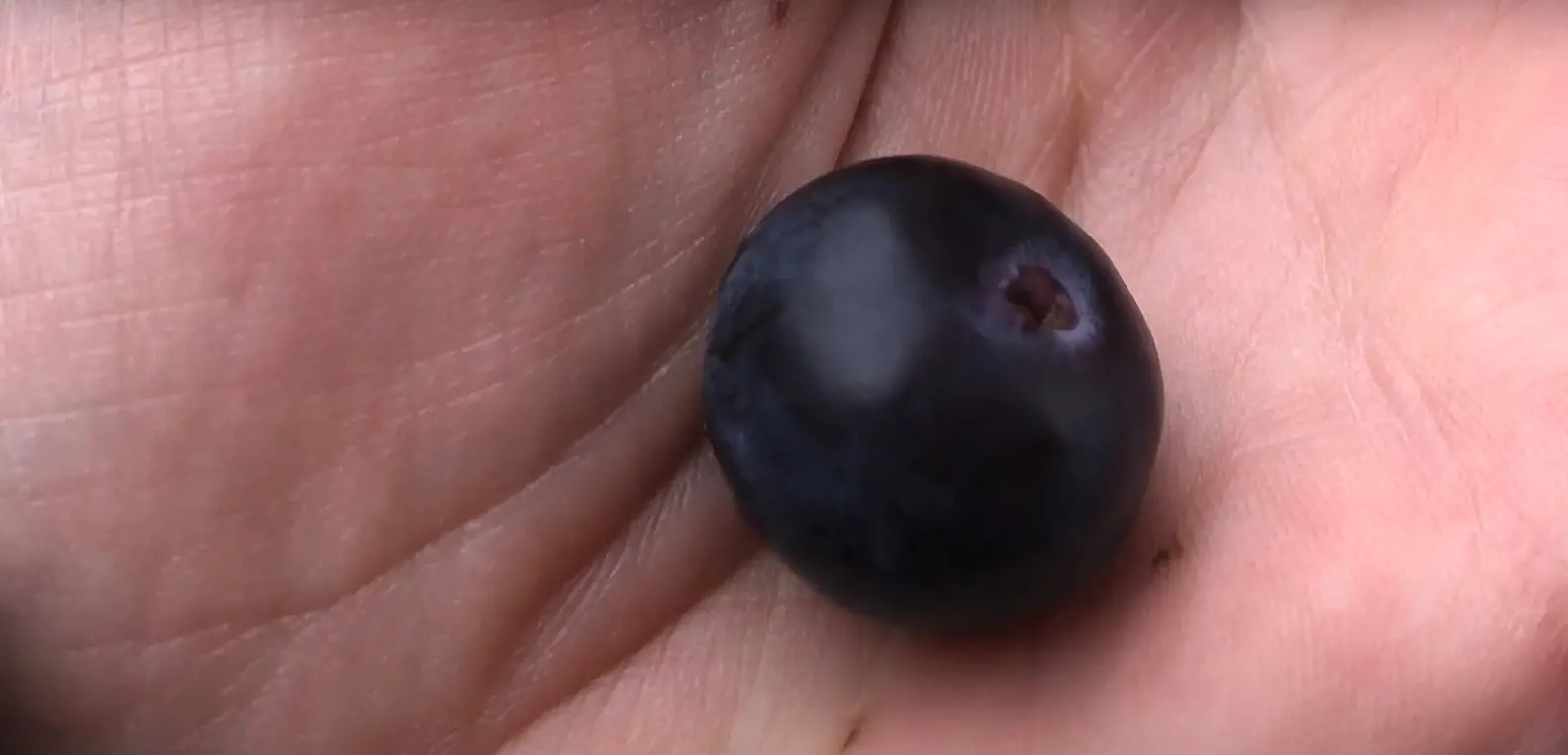
Are Coffee Grounds Good For Blueberries?
Coffee grounds can provide a number of benefits for blueberry bushes, due to their high nitrogen content. Applying coffee grounds to the soil around your blueberries may reduce the acidity in the soil and help make phosphate and other nutrients more available to the plants.
In addition, its slightly acidic pH level (5.0-6.5) will increase the acidity of the soil, something that blueberry plants require for optimal health and growth. Coffee grounds will also add organic material to your soil, improving its structure, aeration, drainage, water retention capacity — all essential elements for healthy blueberry growth.
In conclusion, used coffee grounds can be beneficial for blueberry bushes when applied infrequently in moderation. Adding a small amount of organic material (such as coffee grounds) to your soil has also been shown to help with drainage problems and improve aeration so that water is able to penetrate deeper into the soil. Used with caution, adding coffee grounds to your blueberry shrubs can have positive benefits! [6]
Are Eggshells Good For Blueberries?
When it comes to blueberry leaves turning purple, some gardeners advocate the use of eggshells as a natural fertilizer. While eggshells contain calcium and other minerals that can help nourish plants, there is no scientific evidence that they are beneficial for blueberries. In fact, using them might be harmful because eggshells break down slowly in soil, which could lead to an excess buildup of nutrients.
Additionally, if not properly composted or processed into smaller pieces before being used in gardens, eggshells may attract pests such as slugs and snails. In conclusion, while some claim that adding crushed eggshells to the soil is beneficial for blueberry plants, there has been no scientific evidence supporting this idea. It is best to avoid using eggshells or any other type of organic fertilizer for blueberry plants, as they may not be beneficial and could even cause harm.
FAQ
Why are my blueberry leaves turning purple?
Blueberry leaves turning purple can be caused by a variety of factors, including environmental stressors like extreme temperatures and too much or too little water. It can also be caused by nutrient deficiencies in the soil, such as low levels of phosphorus or nitrogen. Additionally, if your plant is exposed to intense sunlight for long periods of time, it could cause the leaves to turn purple.
What should I do if my blueberry leaves are turning purple?
The first step is to identify the cause of the problem. Check for signs of nutrient deficiency or any other environmental stressors listed above that may be contributing to the issue. If you determine that there’s an issue with soil nutrients, then apply fertilizer specifically designed for blueberries. If environmental stressors are the cause, then adjust your watering and sunlight exposure accordingly.
Will my blueberry plants recover if their leaves turn purple?
For the most part, yes. Depending on the severity of the issue and how quickly you take action to address it, your plant should eventually return to its normal color. It’s important to act quickly once you identify the problem in order to give your plant the best chance for recovery.
Can I prevent blueberry leaves from turning purple?
Yes! The best way to prevent this is by making sure you’re providing optimal conditions for your plant, such as proper fertilization, appropriate amounts of water and sunlight exposure, and avoiding any extreme temperatures or other environmental stressors. Additionally, check for any nutrient deficiencies in the soil and supplement as needed. With these precautions in place, you can help ensure that your blueberry leaves stay healthy and green!
How do you fix magnesium deficiency in blueberry plants?
Magnesium deficiency can be addressed in several ways. One option is to apply magnesium sulfate (epsom salts) around the base of the blueberry plants, providing an additional source of magnesium for the plant’s root system to draw from. It is important to check soil pH before applying magnesium sulfate, because its application may lower this value. A soil test should also be conducted prior to applying any fertilizer or other amendment to determine what other kinds of nutrients might be lacking in addition to magnesium. Alternatively, foliar sprays containing magnesium sulfate can also be applied directly onto the leaves for a quick boost of both sulfur and magnesium. Finally, adding composted manure or wood ash into the soil will help supply additional potassium and calcium that can help offset magnesium deficiency in blueberry plants. Ultimately, it is important to properly diagnose the cause of a nutrient deficiency and provide the right solution for optimal plant health.
How do you fix blueberry chlorosis?
Chlorosis can be addressed by providing additional iron to the soil, which can usually be accomplished by adding composted manure or using a foliar spray containing iron chelate. It is important to check soil pH before applying any fertilizers or amendments as it may further reduce this parameter and worsen the chlorosis problem. Additionally, it is best to test the soil prior to making any adjustments in order to determine what other nutrients may need to be supplemented in addition to iron. As with magnesium deficiency, regular monitoring of blueberry plants’ nutrient levels should help prevent chlorosis from occurring in the first place.
Useful Video: UPDATE: Blueberries!
Conclusion
Blueberry leaves turning purple can be a sign of nutrient deficiency or too much water. In either case, it is important to take steps to address the issue quickly before it becomes more severe. To ensure the best outcome for your blueberries, monitor their growth and health regularly. If you notice any signs of stress such as yellowing or wilting leaves, investigate potential causes and remediate them right away. This will help keep your blueberries healthy and produce delicious fruit year after year! With proper care and regular maintenance, you can enjoy fresh blueberries straight from your garden.
References:
- https://blogs.cornell.edu/berrytool/blueberries/leaves-are-unusually-colored-spotted-or-necrotic-browning/
- https://gardenguider.com/blueberry-leaves-turning-purple/
- https://growingfruit.org/t/blueberry-bushes-turning-purple-whats-wrong/11104
- https://columbusblueberry.com/faq/why-are-my-blueberry-bush-leaves-turning-purple.html
- https://www.allaboutgardening.com/blueberry-red-leaves/






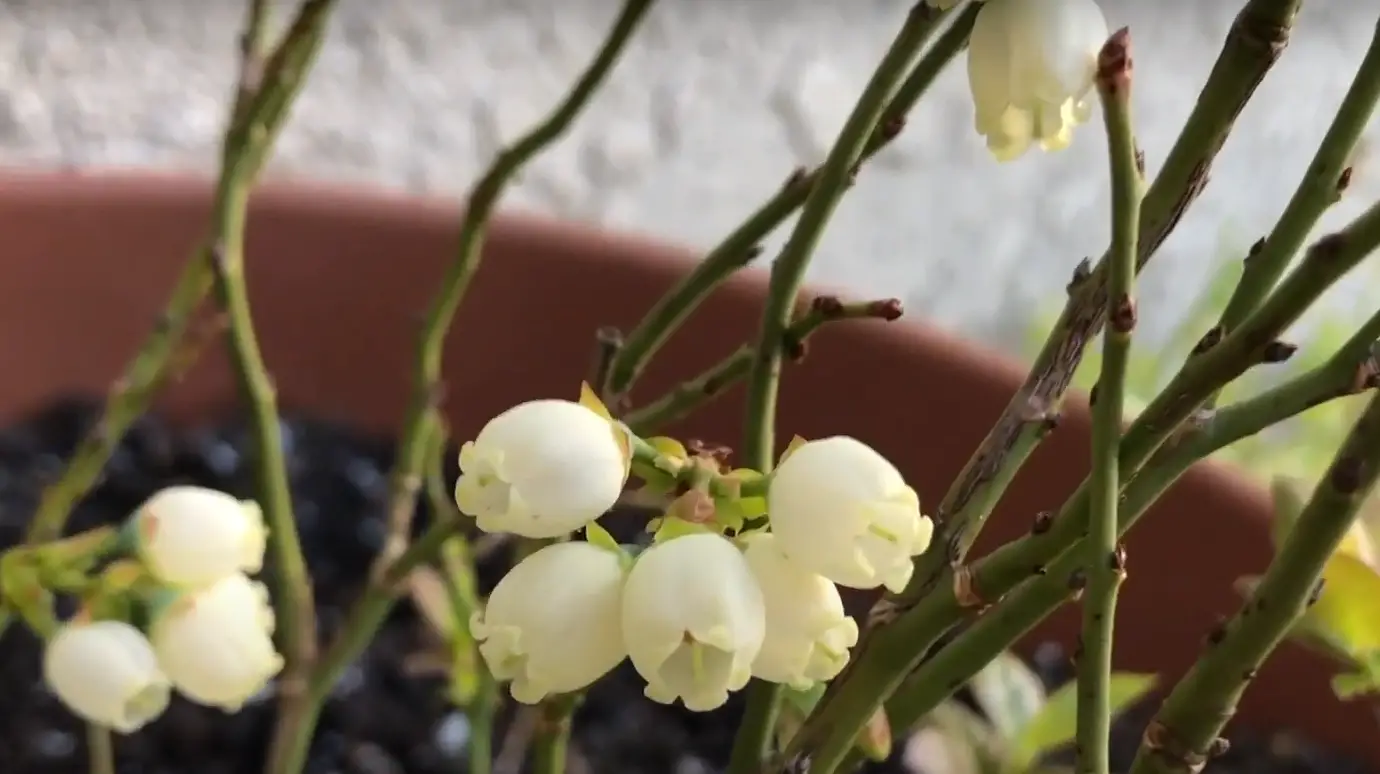
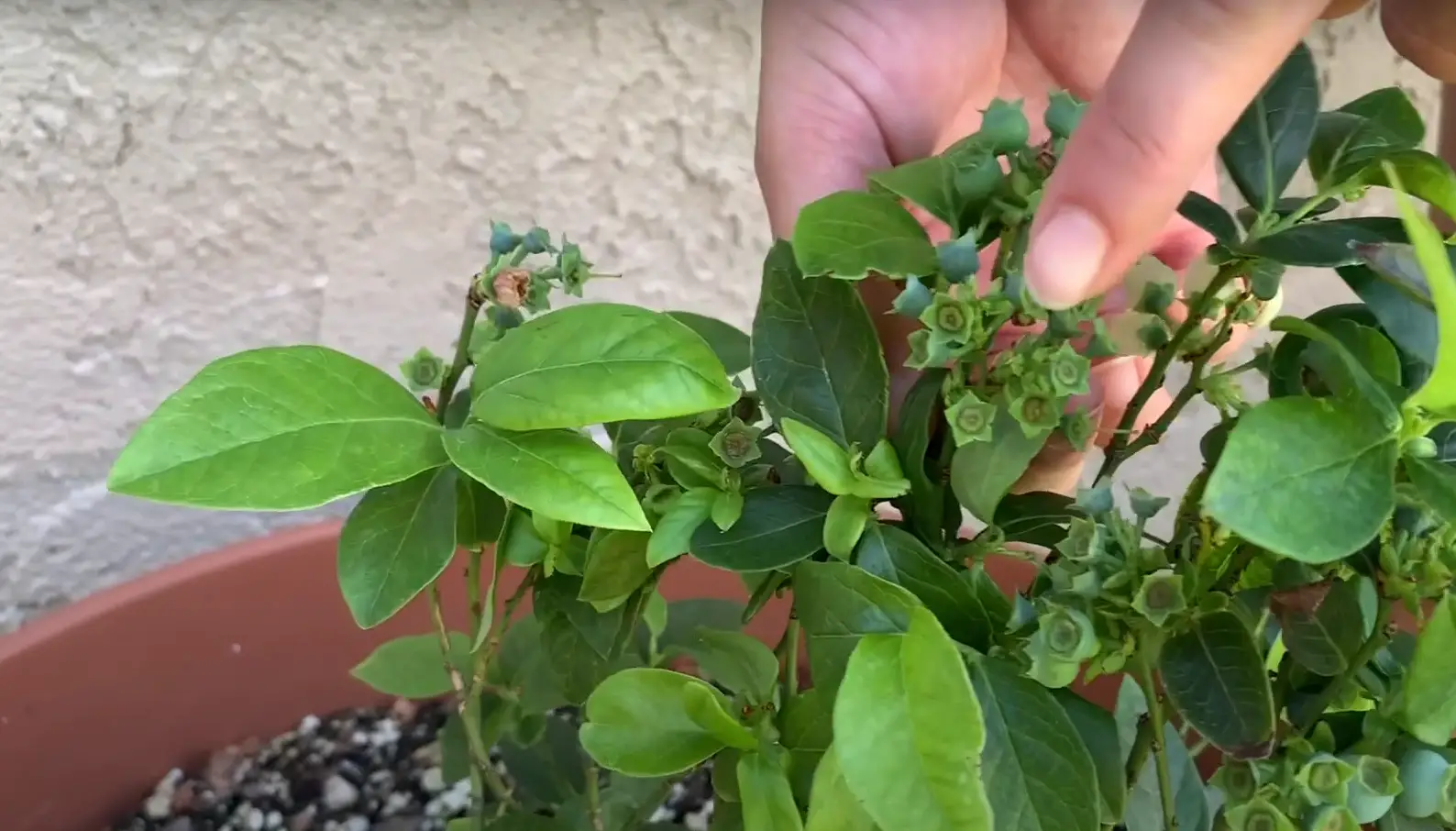





Leave a Reply
View Comments